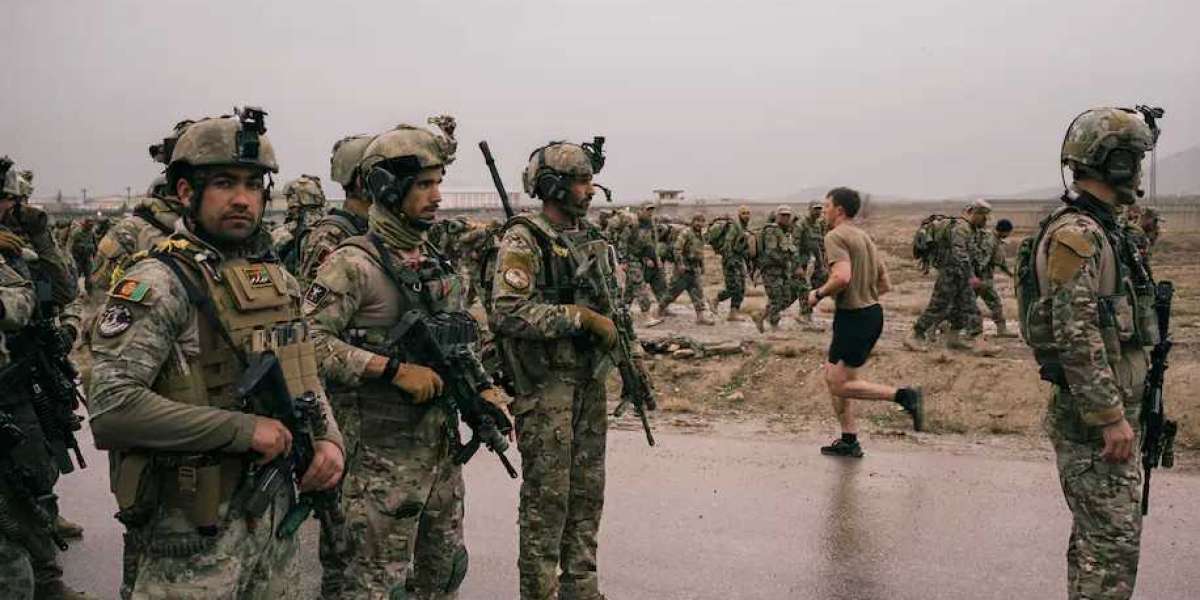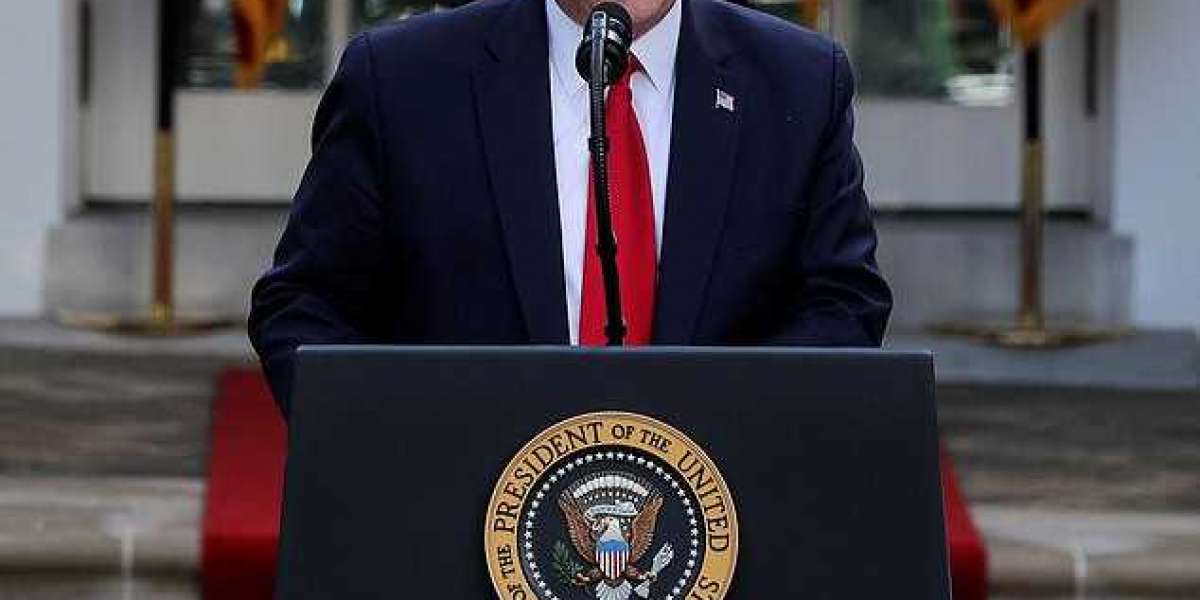While the Taliban has promised to renew attacks on U.S. and NATO personnel if foreign troops are not out by the deadline — and said in a statement it would not continue to participate in “any conference” about Afghanistan’s future until all “foreign forces” have departed — it is not clear whether the militants will follow through with the earlier threats given Biden’s plan for a phased withdrawal between now and September. The Taliban has conducted sputtering talks with the Afghan government, begun under the Trump deal, since last fall. It was also invited to
an additional high-level inter-Afghan discussion in Turkey later this month.
Officially, there are 2,500 U.S. troops in Afghanistan, although the number fluctuates and is currently about 1,000 more than that. There are also up to an additional 7,000 foreign forces in the coalition there, the majority of them NATO troops.
Biden’s decision comes after an administration review of U.S. options in Afghanistan, where U.S.-midwifed peace talks have failed to advance as hoped and the Taliban remains a potent force despite two decades of effort by the United States to defeat the militants and establish stable, democratic governance. The war has cost trillions of dollars in addition to the lives of more than 2,000 U.S. service members. At least 100,000 Afghan civilians have been injured or killed.
“This is the immediate, practical reality that our policy review discovered,” said one person familiar with the closed-door deliberations who, like others, spoke on the condition of anonymity to discuss policy planning. “If we break the May 1st deadline negotiated by the previous administration with no clear plan to exit, we will be back at war with the Taliban, and that was not something President Biden believed was in the national interest.”
The goal is to move to “zero” troops by September, the senior administration official said. “This is not conditions-based. The president has judged that a conditions-based approach . . . is a recipe for staying in Afghanistan forever. He has reached the conclusion that the United States will complete its drawdown and will remove its forces from Afghanistan before September 11th.”
The decision highlights the trade-offs the Biden administration is willing to make to shift the U.S. global focus from the counterinsurgency campaigns that dominated the post-9/11 world to current priorities, including increasing military competition with China.
In addition to major domestic challenges, “the reality is that the United States has big strategic interests in the world,” the person familiar with the deliberations said, “like nonproliferation; like an increasingly aggressive and assertive Russia; like North Korea and Iran, whose nuclear programs pose a threat to the United States;” like China. “The main threats to the American homeland are actually from other places: from Africa, from parts of the Middle East — Syria and Yemen.”
“Afghanistan just does not rise to the level of those other threats at this point,” the person said. “That does not mean we’re turning away from Afghanistan. We are going to remain committed to the government, remain committed diplomatically. But in terms of where we will be investing force posture, our blood and treasure, we believe that other priorities merit that investment.”
Reaction in Washington was divided. In a statement on the Senate floor, Minority Leader Mitch McConnell (R-Ky.) called the plan “reckless” and “a grave mistake. It is retreat in the face of an enemy that has not yet been vanquished and abdication of American leadership.”
McConnell pointed to a 2019 amendment — passed by a supermajority of senators when President Donald Trump called for full withdrawal from Syria — that requires the administration to “certify that conditions have been met for the enduring defeat of al-Qaeda and [the Islamic State] before initiating any significant withdrawal of United States forces from Syria or Afghanistan.”
“Can President Biden certify that right now?” McConnell asked.
But while McConnell cited “broad political support” for an ongoing military presence in Afghanistan, other lawmakers called it the right decision.
“There are no good, easy decisions here,” said Rep. Adam Smith (D-Wash.), chairman of the House Armed Services Committee. “Given the options, I think this is the best choice.”
“We cannot impose a solution on Afghanistan,” Smith said in an interview. “I don’t doubt for a second there is going to continue to be violence and turbulence,” but the main transnational terrorist threat is now elsewhere. “We can only be in so many places. We have to make choices, and those choices are not easy. It’s not as if we didn’t put in the time in Afghanistan.”
Some officials have warned that a U.S. exit will lead to the collapse of the Kabul government while jeopardizing gains made over the past two decades in health, education and women’s rights.
Biden administration officials say the United States intends to remain closely involved in the peace process and will continue to provide humanitarian aid and assistance to the Afghan government and security forces, which remain almost totally dependent on foreign support.
“What we will not do is use our troops as bargaining chips,” the senior official said.
“We went to Afghanistan to deliver justice to those who attacked us on September 11th. . . . We believe we achieved that objective some years ago,” the senior official said, and now judge the threat to the United States “to be at a level that we can address it without a persistent military footprint.”
Biden, who argued unsuccessfully during the Obama administration for a small, counterterrorism-focused presence, had already hinted that the United States would remain for only a limited time beyond the May 1 deadline.
Late last month, he said he did not expect U.S. troops to be deployed there next year. “We will leave,” he said at a White House news conference. “But the question is when we leave.”
Administration officials were in the process of notifying officials in NATO nations as well as Afghan officials and the Taliban on Tuesday. Afghan President Ashraf Ghani, in a statement from his office, said he would have no comment until an upcoming phone call with Biden “to officially share details of the new withdrawal plan.”
The senior official also said the Taliban was reminded of its commitments under the Trump deal and warned against attacking departing U.S. forces. Taliban spokesman Zabiullah Mujahid said the militants would officially respond “when the U.S. formally announces” its plans, presumably by Biden on Wednesday.
The official said the U.S. withdrawal would be fully coordinated with NATO and other coalition partners. Citing NATO’s “in together, out together” mantra, the senior official said, “We will take the time we need to execute that, and no more time than that.” The official said withdrawal would begin before May 1 and might well be completed before September.
Many NATO governments have said they have no desire or ability to remain without the logistical, security and other support the U.S. forces provide.
Secretary of State Antony Blinken and Defense Secretary Lloyd Austin, in Brussels on Tuesday and Wednesday, are informing their NATO counterparts. Germany has the second-largest force in Afghanistan, numbering over 1,000. Officials there have cautioned that they would need months to organize an orderly departure.
In early March, Blinken launched a last-ditch diplomatic effort to bring the Taliban and the Afghan government together to end the war with an interim power-sharing deal. He warned Ghani in a sharply worded letter that time was growing short.
The hope was to accelerate a negotiating process begun under Trump in 2019, when White House envoy Zalmay Khalilzad started talks with militant leaders in Doha, the capital of Qatar. That led to a February 2020 agreement signed by Secretary of State Mike Pompeo under which the United States pledged to withdraw its forces by May 1, 2021, in exchange for Taliban severance of all ties with al-Qaeda and agreement to begin negotiations with the Afghan government toward a cease-fire and peace accord.
While the inter-Afghan talks began in September, they have made little progress. At the same time, the Taliban has increased its attacks on Afghan troops and expanded its territorial control. As the new administration launched its review, the Pentagon and the United Nations reported that the militants had not complied with their commitments under the Trump agreement.
Many Afghan experts have concluded that the Taliban is moving closer to a military victory, but that it may be reluctant to take over as a pariah government, which could result in a loss of international support and financial aid for the country.
Biden’s choice was a stark one. With U.S. public opinion and Congress divided, staying could lead to political difficulties at home and renewed Taliban attacks on U.S. forces. But an abrupt American departure could undermine any achievements made in the past two decades, reduce the possibility of a peace deal and lead to a Taliban takeover.
John Sopko, the independent special inspector general for Afghanistan reconstruction, warned Congress last month that U.S. withdrawal without a peace deal in place would be “a disaster” and mean government collapse. Others have warned of civil war, as regional warlords have amassed and armed their own forces.
Blinken’s warning to Ghani, along with the interim government proposal, seemed to have little effect. He called for a conference of Taliban and Afghan leaders to take place in Turkey this month and a U.N.-convened meeting of regional governments, including Iran, along with the United States, to push diplomacy.
Although Turkey announced Tuesday that the Afghan meeting would go ahead on April 24, Mohammad Naeem, spokesman for the Taliban political office, said in a tweet Tuesday that “until all foreign forces completely withdraw from our homeland,” the group would “not participate in any conference that shall make decisions about Afghanistan.”
No U.N. meeting has been confirmed. Khalilzad’s shuttle diplomacy among the Afghans and with regional leaders has yet to bring the two sides together in agreement.
The person familiar with the administration’s deliberations rejected the suggestion that these apparent failures precipitated Biden’s decision. The United States, the person said, would continue its diplomatic efforts to bring peace. But time had proved that the presence of U.S. troops, even at much higher levels, was not effective leverage at moving the parties beyond where they have been willing to go, he said.
Rep. Elissa Slotkin (D-Mich.), a former CIA analyst and senior security official in administrations of both parties, said Congress would need a full accounting of plans to secure U.S. diplomats in Afghanistan and ensure that global extremists from al-Qaeda and the Islamic State are unable to gain renewed strength.
The senior official said any potential for a resurgence of al-Qaeda in Afghanistan, where U.S. intelligence assesses its presence as relatively small, “will be met with vigilance.”
Drawing on the “lesson from Iraq,” where the Islamic State turned into a major fighting force after the bulk of U.S. troops left, “we have to have the intelligence and military capabilities positioned in the region and the attention of our national security apparatus sufficiently focused to ensure” that if al-Qaeda “begins to emerge,” the United States “will deal with it,” the senior official said.
While officials said Biden would end the military mission entirely, they acknowledged that an undetermined number of troops would remain to secure the U.S. Embassy in Kabul, where diplomats would be vulnerable if security deteriorates in the Afghan capital.
During his campaign, Biden said his preference was to leave a counterterrorism force of about 1,500 troops in Afghanistan even as other forces withdrew. That now appears to be off the table.
But it’s unclear how the administration may use civilian contractors and intelligence officials now working with military personnel to retain a capacity to discern and respond to extremist threats. The U.S. government has routinely assigned military personnel under CIA or other intelligence agency authority in overseas missions, allowing them to conduct certain activities without technically counting as part of a military footprint. The senior official declined to comment on the issue.
Retired Gen. Colin L. Powell, a former secretary of state and chairman of the Joint Chiefs of Staff, said the decision to leave was overdue. “I wouldn’t say enough is enough,” said Powell, who led George W. Bush’s State Department during the 9/11 attacks and the beginning of the U.S. war in Afghanistan. “I’d say we’ve done all we can do. . . . What are those troops being told they’re there for? It’s time to bring it to an end.”
The Soviet Union, which occupied Afghanistan for a decade until it abruptly withdrew in 1989, “did it the same way,” Powell said. “They got tired, and they marched out and back home. How long did anybody remember that?”



